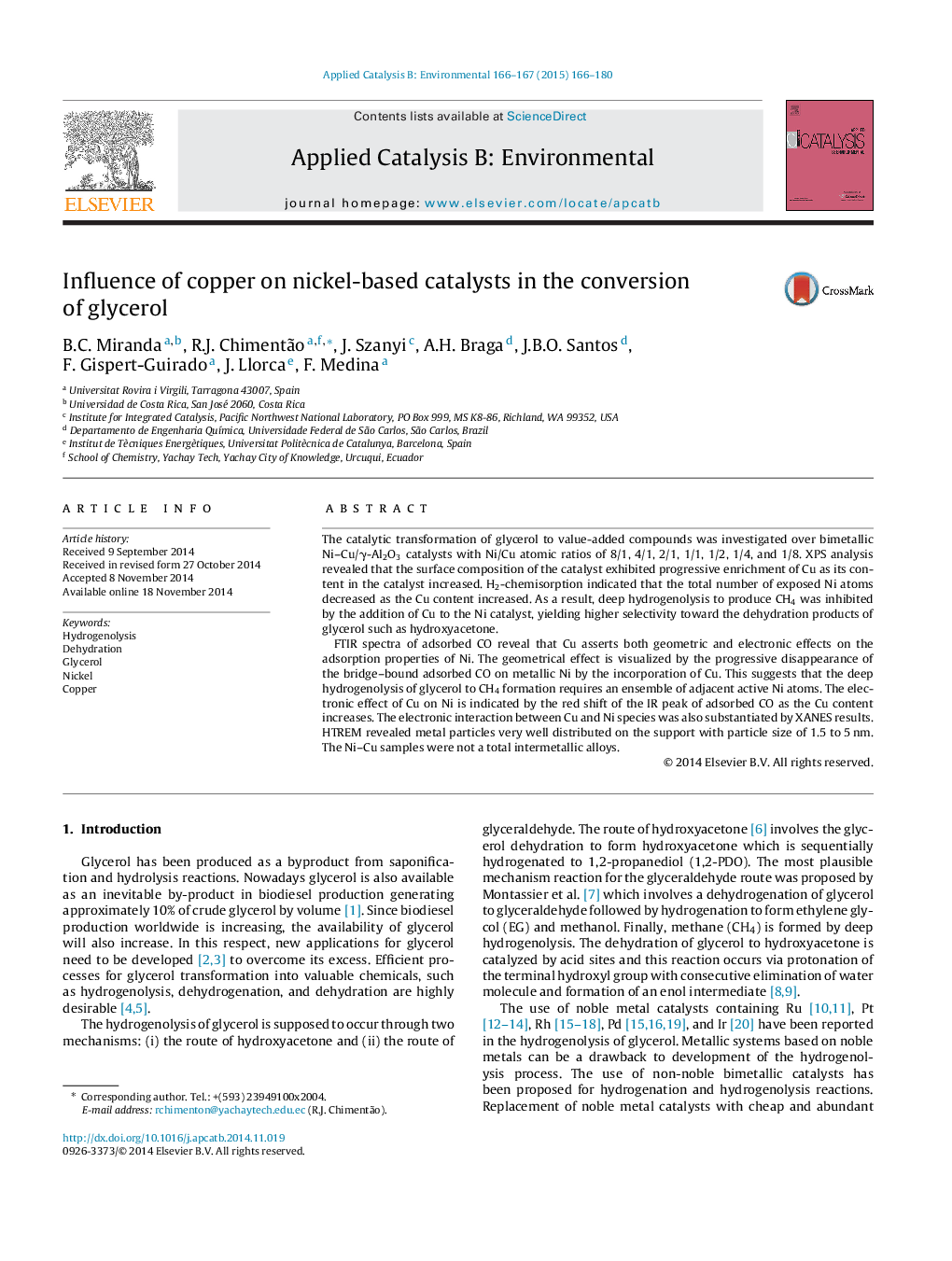| Article ID | Journal | Published Year | Pages | File Type |
|---|---|---|---|---|
| 45708 | Applied Catalysis B: Environmental | 2015 | 15 Pages |
•FTIR of adsorbed CO reveals that Cu asserts both geometric and electronic effects on Ni.•As the Ni/Cu atomic ratio decreases the dehydration–dehydrogenation routes prevail.•The total number of exposed Ni atoms decreased as the Cu content increased.
The catalytic transformation of glycerol to value-added compounds was investigated over bimetallic Ni–Cu/γ-Al2O3 catalysts with Ni/Cu atomic ratios of 8/1, 4/1, 2/1, 1/1, 1/2, 1/4, and 1/8. XPS analysis revealed that the surface composition of the catalyst exhibited progressive enrichment of Cu as its content in the catalyst increased. H2-chemisorption indicated that the total number of exposed Ni atoms decreased as the Cu content increased. As a result, deep hydrogenolysis to produce CH4 was inhibited by the addition of Cu to the Ni catalyst, yielding higher selectivity toward the dehydration products of glycerol such as hydroxyacetone.FTIR spectra of adsorbed CO reveal that Cu asserts both geometric and electronic effects on the adsorption properties of Ni. The geometrical effect is visualized by the progressive disappearance of the bridge–bound adsorbed CO on metallic Ni by the incorporation of Cu. This suggests that the deep hydrogenolysis of glycerol to CH4 formation requires an ensemble of adjacent active Ni atoms. The electronic effect of Cu on Ni is indicated by the red shift of the IR peak of adsorbed CO as the Cu content increases. The electronic interaction between Cu and Ni species was also substantiated by XANES results. HTREM revealed metal particles very well distributed on the support with particle size of 1.5 to 5 nm. The Ni–Cu samples were not a total intermetallic alloys.
Graphical abstractFigure optionsDownload full-size imageDownload as PowerPoint slide
